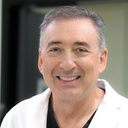Posted underFacelift q&a
Wondering if the Fotona 4d laser facelifting is worth it. Are there good results with reducing the marionette lines and nasolabi
Fotona 4d laser facelifting ....wondering doctors opinions on this treatment.
Answers (12)
From board-certified doctors and trusted medical professionals
Dr. Vincent N. Zubowicz, MD

Dr. Vincent N. Zubowicz, MD
Board Certified Plastic Surgeon
Answer
Dr. Philip Solomon, MD, FRCS

Dr. Philip Solomon, MD, FRCS
Certified Facial Plastic Surgeon
Answer
Dr. Boris M. Ackerman, MD

Dr. Boris M. Ackerman, MD
Board Certified Plastic Surgeon
Answer
Dr. Christian Subbio, MD

Dr. Christian Subbio, MD
Board Certified Plastic Surgeon
Answer
Dr. Toby Mayer, MD

Dr. Toby Mayer, MD
Board Certified Facial Plastic Surgeon
Answer
Dr. Gustavo A. Diaz, MD
Dr. Gustavo A. Diaz, MD
Board Certified Facial Plastic Surgeon
Answer
Dr. Michael E. Kelly, MD
Dr. Michael E. Kelly, MD
Board Certified Plastic Surgeon
Answer
Dr. Robert Singer, MD
Dr. Robert Singer, MD
Board Certified Plastic Surgeon
Answer
Dr. Keith Denkler, MD
Dr. Keith Denkler, MD
Board Certified Plastic Surgeon
Answer
Dr. Gerald Wittenberg, MSc, DMD (retired)
Dr. Gerald Wittenberg, MSc, DMD (retired)
Certified Oral & Maxillofacial Surgeon
Answer
More Facelift Questions
See all Facelift Q&AWE SEND PRETTY
EMAILS
What’s trending? Who’s turning heads? Which TikTok myths need busting? We’ve got you. No fluff, no gatekeeping—just real talk. Get our free, unfiltered newsletter.